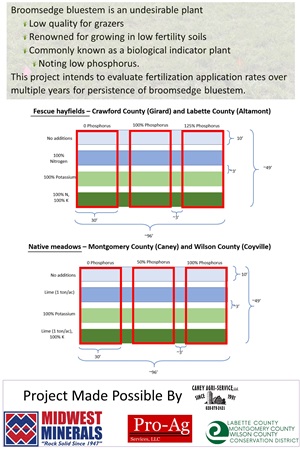Broomsedge: Known aliases - Poverty Grass, Sagegrass
The Broomsedge Project will evaluate the impact of fertilization strategies on broomsedge in fescue and native grass hay fields in SE Kansas, over multiple years. At each site, fertilizer treatments will be applied based on the location’s soil analysis. During the first year, these fertilizer treatments are designed to consider lime, phosphorus, potassium and nitrogen and their effects on the persistence of broomsedge bluestem.
The project collaborators are Wildcat District Agents (Wendie Powell, James Coover and Adaven Scronce), K-State Specialists (Dr. Gretchen Sassenrath, Dr. Jaymelynn Farney), local Conservation Districts (Levi Clubine- Montgomery County, Pam Walker- Wilson County and Elissa Robison- Labette County). As a team, we are excited to plan field days and fact sheets to share the knowledge we learn.
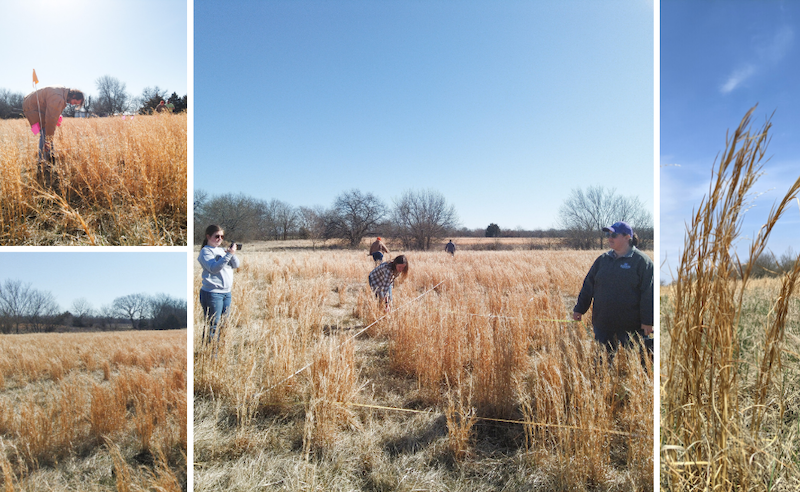
Progress Reports
Impact of stubble heights on native hay meadows in Southeast Kansas.
Yield and forage quality on native meadows as affected by burn and fertilization management.
Click here for a bigger Display Poster
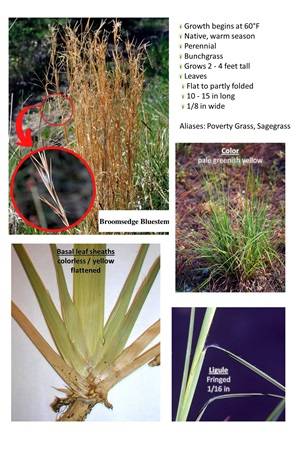
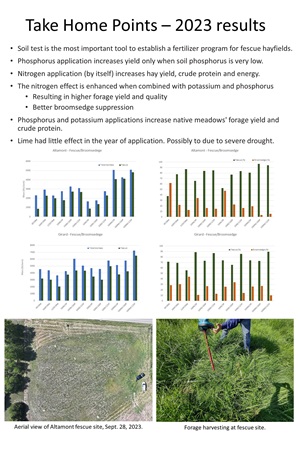
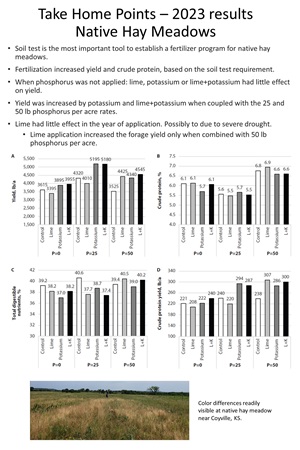
Plot Maps
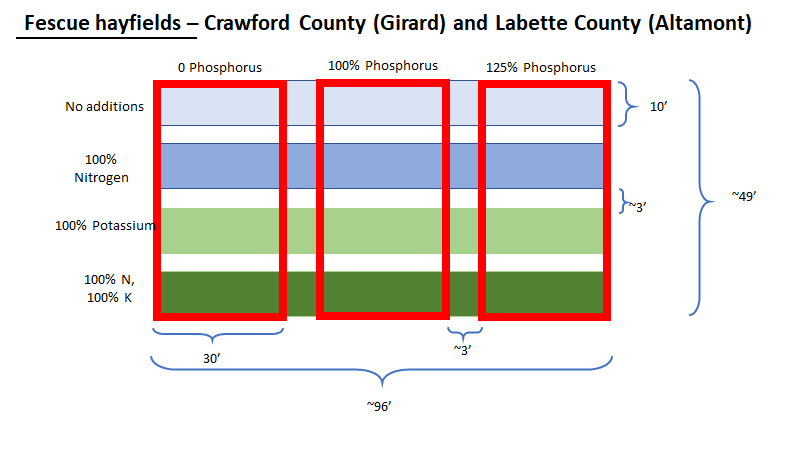 |
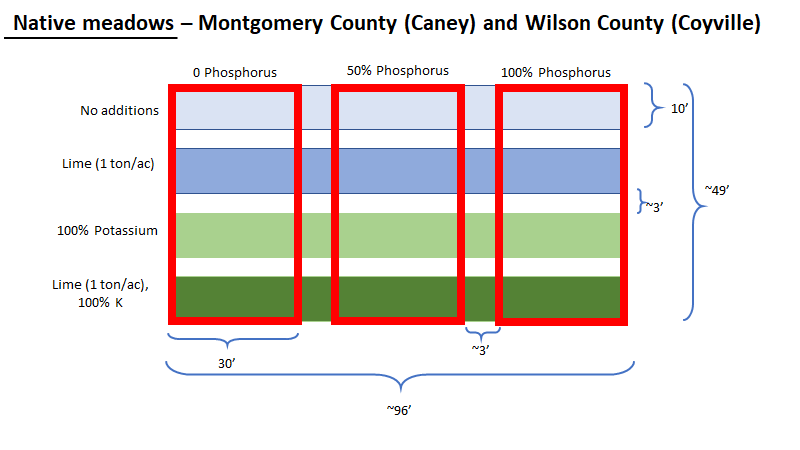 |
Broomsedge Bluestem
Conservation District Partners
Kansas Department of Agriculture (KDA) Division of Conservation (DOC) - oversight agency for the conservation districts in Kansas. The KDA DOC assists each District Manager and their Board of Supervisors, composed of (usually) five locally elected persons charged with guiding each conservation district. This guidance includes laws, regulations, funds management AND state cost-share for voluntary implementation of specific conservation practices to address recognized resource concerns in each county.
https://agriculture.ks.gov/divisions-programs/division-of-conservation
The first page of this site includes a map. Users can click on a county and find the conservation district office, district manager’s name and contact information. There is information about each of the Supervisors representing their county on the board.
Kansas Association of Conservation Districts (KACD) - the KACD is the organization which gives “voice” to conservation district boards and to conservation district managers:
Natural Resources Conservation Service (NRCS) - Conservation districts and the United States Department of Agriculture (USDA) and the NRCS are closely partnered.
https://www.nrcs.usda.gov/wps/portal/nrcs/site/national/home/
Kansas NRCS:
https://www.nrcs.usda.gov/state-offices/kansas
Labette County:
